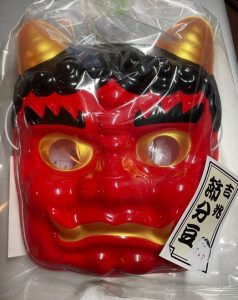Memoir (10) by Professor Joe Watkins, University of Arizona, USA
Welcome to 2023! Well, maybe I’m a little late, but the Chinese Year of the Rabbit (beginning January 20th this year) is MY year (although I will share it with the rest of you who have a birthday this year). I did not get back to Sapporo until it was too late to burn last year’s lucky charm during the time of dondo yaki, but I was here in time for Setsubun – the Japanese Lunar New Year celebrated on February 3rd – in time to throw beans to drive the evil spirits away and to welcome good fortune into my new apartment by eating an ehomaki* roll in silence while facing south-southeast.
I find it wonderful to learn about and take part in new traditions! I am always full of questions about them, and I hope my colleagues in the GSI office are not tired of answering them. Sometimes our conversations are simple and I am able to comprehend the ideas behind the ceremonies, celebrations, or customs. Other times I have a bit of trouble. My background in the United States is probably rather common, and some customs such as Groundhog’s Day are not celebrated in some places as much as in others. I’m sure many of you have seen the movie Groundhog Day starring Bill Murray and Andie McDowell. For those of us who do not live in Punxsutawney, Pennsylvania, (where the film takes place) Groundhog Day was not such a spectacle. The saying goes that if a groundhog saw its shadow on February 2nd, there would be six more weeks of winter. Growing up in Oklahoma, I had never seen a groundhog and didn’t know how one could see its shadow, but I was always intrigued when (or if) the sun shown in my backyard on that morning.

I am in Japan for Groundhog Day this year, but I found a mask of an evil spirit at a local shop and will wear it to the GSI office so that those who are there can help me participate In the ritualistic casting out of evil spirits and the welcoming in of good luck. I wonder if I will get in trouble if I wear the mask into the bank for an early morning appointment on February 3rd?
*Ehomaki – Eho means lucky direction in Japanese. This year the direction is south-southeast.


